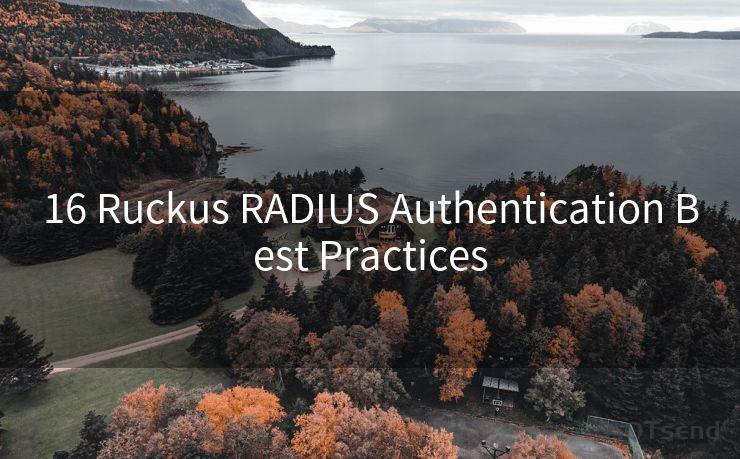16 Ruckus RADIUS Authentication Best Practices




When it comes to wireless network authentication, RADIUS (Remote Authentication Dial-In User Service) plays a crucial role. Ruckus, a leading provider of wireless solutions, offers robust RADIUS authentication capabilities. In this article, we'll explore the top 16 best practices for Ruckus RADIUS authentication to ensure secure and efficient network access.
1. Understand RADIUS Basics
Before implementing RADIUS authentication, it's essential to understand its fundamentals. RADIUS is a networking protocol that provides centralized authentication, authorization, and accounting (AAA) management for computers to connect and use a network service.
2. Secure Communication
Ensure that all RADIUS communication is encrypted using protocols like EAP-TLS or PEAP to prevent eavesdropping and man-in-the-middle attacks.
3. Strong Passwords
Enforce strong password policies for all users. This includes requiring a minimum length, a mix of characters, and regular password changes.
4. Regular Updates
Keep your Ruckus system and RADIUS server up to date with the latest security patches and updates. This helps protect against known vulnerabilities.
5. Separate Management and Data VLANs
Implement separate VLANs for management and data traffic to isolate and protect sensitive management traffic from potential attacks.
6. Implement Access Control Lists
Use Access Control Lists (ACLs) to restrict access to sensitive resources and prevent unauthorized access.
7. Monitor and Log
Enable detailed logging on both the Ruckus system and the RADIUS server. Regularly monitor these logs for any suspicious activity.
8. Backup and Recovery Plan
Have a backup and disaster recovery plan in place for both the RADIUS server and the Ruckus system. Regularly test these backups to ensure their integrity.
9. Least Privilege Principle
Apply the principle of least privilege, granting only the necessary access rights to users and applications.

10. Multi-Factor Authentication
Consider implementing multi-factor authentication for added security, especially for privileged accounts.
11. Session Timeout
Set reasonable session timeouts to automatically disconnect inactive sessions, reducing the risk of unauthorized access.
12. Regular Audits
Conduct regular security audits to identify and address any potential vulnerabilities.
13. Training and Awareness
Provide regular security training to staff to ensure they understand best practices and can identify potential threats.
14. Hardware and Software Security
Ensure that the hardware and software used for RADIUS authentication are physically and logically secure.
15. Firewall Protection
Implement firewalls to protect the RADIUS server and Ruckus system from unauthorized access.
16. Compliance with Standards
Ensure that your RADIUS authentication practices comply with relevant industry standards and regulations.
By following these best practices, organizations can ensure secure and efficient RADIUS authentication with Ruckus systems. Remember, security is an ongoing process, and it's essential to stay vigilant and adapt to emerging threats.
🔔🔔🔔
【AOTsend Email API】:AOTsend is a Managed Email Service for sending transactional emails. Support Email Types: reminders, authentication, confirmations, notifications, verification codes, invoices, password resets, account activations, billing statements, two-factor authentication (2FA), and one-time passwords (OTP) emails, etc. $0.28 per 1000 Emails. 99% Delivery, 98% Inbox Rate.
You might be interested in:
Why did we start the AOTsend project, Brand Story?
What is a Managed Email API, How it Works?
Best 25+ Email Marketing Platforms (Authority,Keywords&Traffic Comparison)
Best 24+ Email Marketing Service (Price, Pros&Cons Comparison)
Email APIs vs SMTP: How they Works, Any Difference?




Scan the QR code to access on your mobile device.
Copyright notice: This article is published by AotSend. Reproduction requires attribution.
Article Link:https://www.mailwot.com/p6469.html



